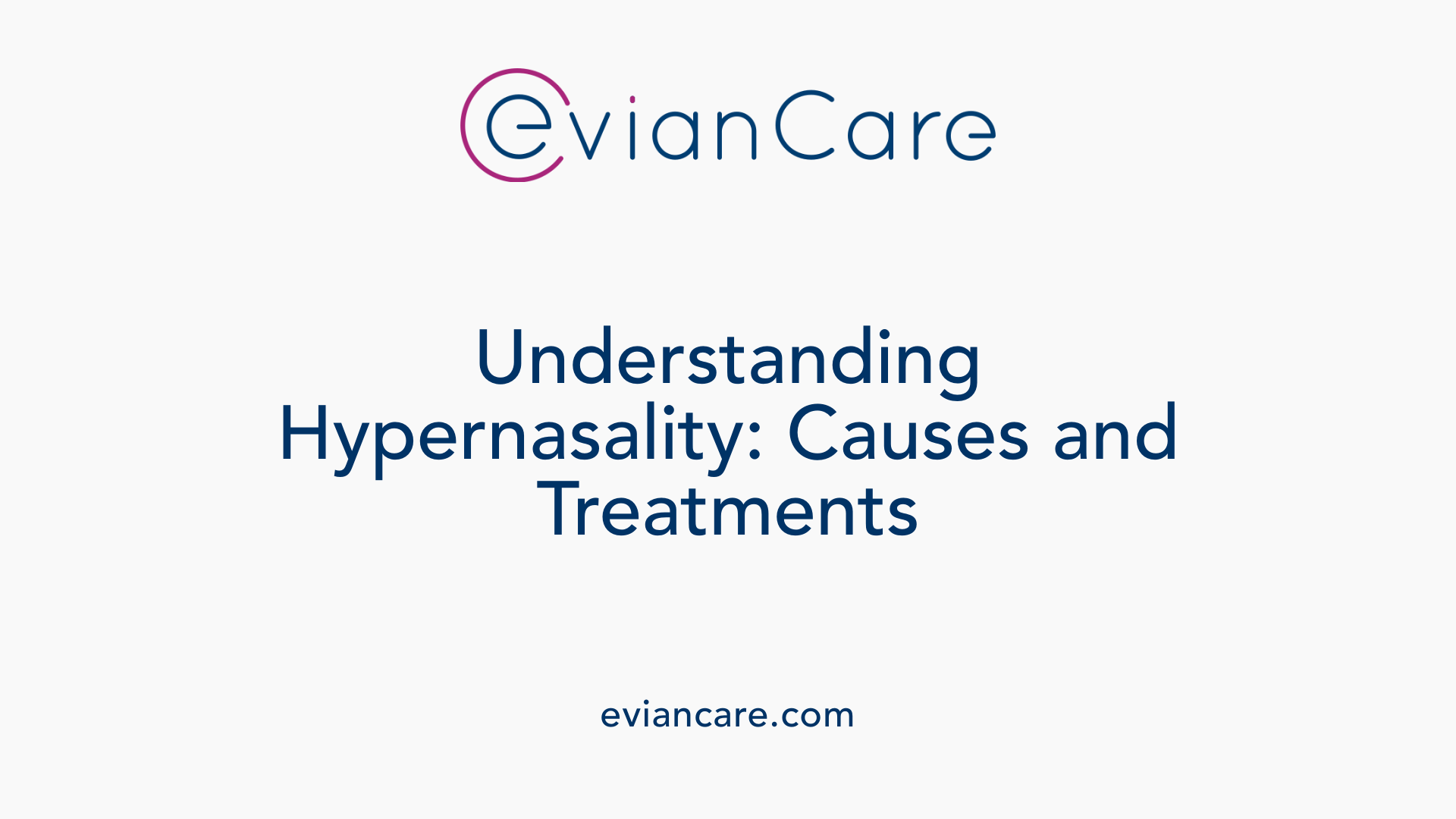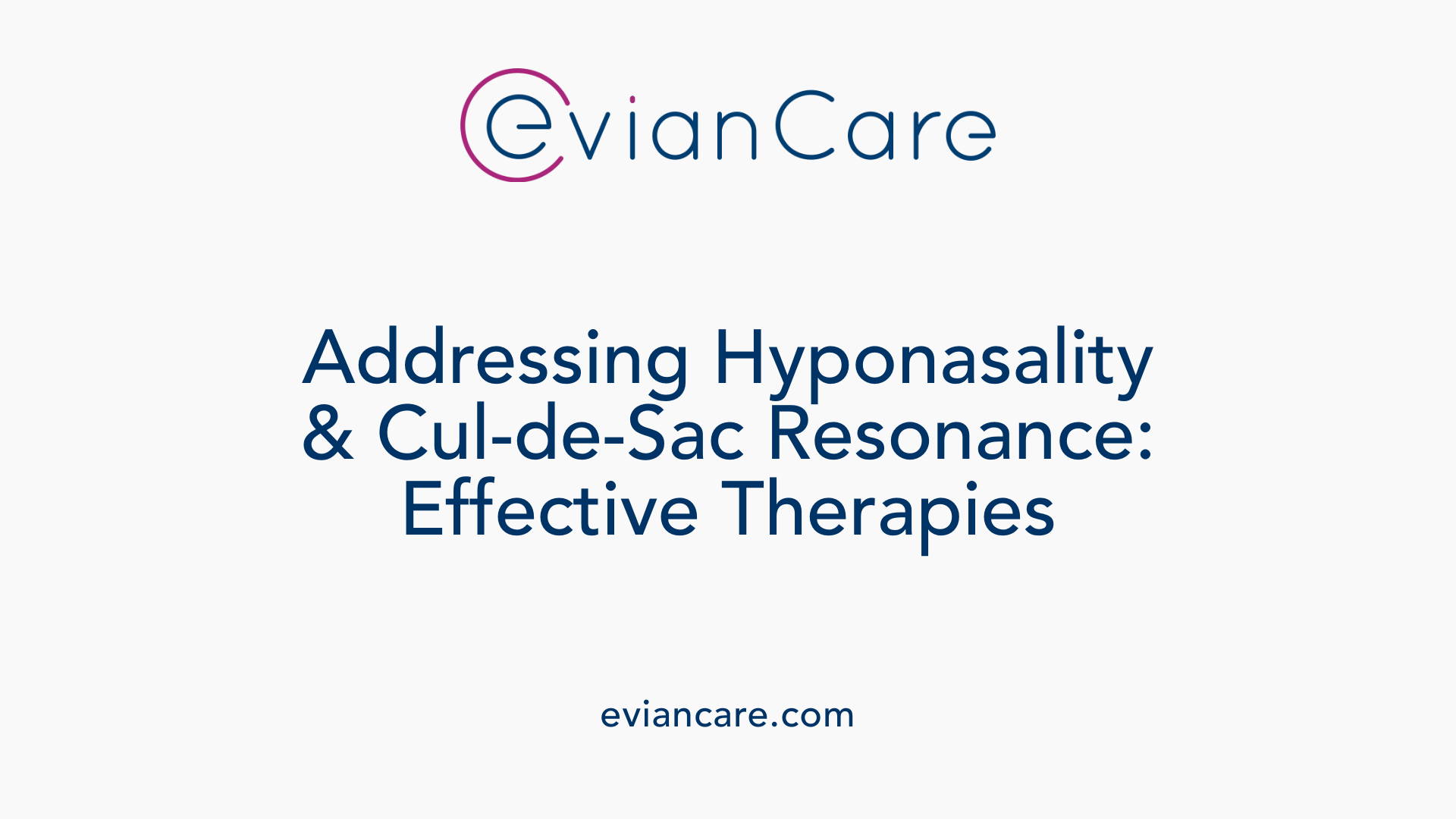
Understanding resonance and its significance in speech
Resonance plays a crucial role in shaping the clarity and quality of our speech. It is the voice characteristic arising from sound vibrations in the pharynx, oral cavity, and nasal cavity. Proper resonance ensures that voice sounds full and natural, while disruptions can lead to various speech resonance disorders. These disorders are not voice disorders per se but significantly impact speech intelligibility and communication effectiveness. Recognizing and treating these conditions is essential for individuals affected by structural or functional anomalies of the vocal tract.
Defining Resonance Disorders and Their Identification

What are resonance disorders, and how are they identified?
Resonance disorders are speech impairments that involve an imbalance of sound energy passing through the oral and nasal cavities during speech. They are characterized by abnormal vibration and airflow which affect voice quality and clarity. These disorders include hypernasality, hyponasality, cul-de-sac resonance, and mixed resonance.
Hypernasality involves excessive sound resonance in the nasal cavity, giving the voice a nasal quality. Hyponasality occurs when there is reduced nasal resonance, often sounding stuffy or blocked. Cul-de-sac resonance happens when sound gets trapped in a cavity, such as the oral or nasal passages, making speech muffled.
The causes of resonance disorders are varied. Structural anomalies like cleft palate, submucous cleft palate, and velopharyngeal dysfunction play a significant role. Obstructions like enlarged tonsils or adenoids, allergies, or nasal congestion can also contribute. Neurogenic issues affecting the muscles of the soft palate and velopharyngeal mechanism are other potential causes.
Symptoms of these disorders include speech that sounds as if talking through the nose, muffled or congested voice, abnormal articulation, and sometimes nasal air emission—distinguishing issues related to airflow from resonance imbalance.
Diagnosis involves a detailed assessment by speech-language pathologists working alongside ENT specialists. Perceptual speech evaluations are conducted, where a trained clinician listens for signs of hypernasality or hyponasality. Additionally, acoustic analysis provides information about the resonance quality.
Oral examinations include visual inspection of the soft palate and velopharyngeal closure. Instrumental procedures such as video nasoendoscopy allow visualization of the velopharyngeal mechanism in action, identifying structural or functional deficits.
Imaging techniques like video fluoroscopy are also used to observe the movement of speech structures during phonation. These assessments collectively help determine whether the resonance issue results from structural malformation, dysfunction, or learned speech patterns.
Successful identification of resonance disorders guides targeted treatment. Speech therapy aims to improve articulation, reinforce correct velopharyngeal function, and modify speech patterns. Surgical options may be considered for severe anatomical problems that do not respond to therapy.
In sum, resonance disorders are identified through a combination of perceptual evaluations, instrumental assessments, and imaging techniques. Understanding the underlying causes ensures that individuals receive appropriate and effective treatment, improving communication and quality of life.
How speech-language pathologists approach treatment for resonance issues
How do voice therapy and speech-language pathologists treat voice disorders related to resonance?
Resonance disorders are addressed primarily through specialized speech therapy techniques focused on modifying how sound vibrates within the oral and nasal cavities. Speech-language pathologists (SLPs) evaluate each individual's unique resonance pattern—whether hypernasal, hyponasal, or cul-de-sac—using various assessment tools. These include visual feedback, detection of nasal emissions, and instrumental measures like nasometry and endoscopic imaging.
Therapeutic exercises play a vital role in rehabilitation. Humming exercises, nasal consonants, straw phonation, resonance shaping, and gentle onset techniques help improve vocal quality and balance nasal and oral resonance.
In cases of hypernasality caused by velopharyngeal dysfunction or structural issues such as a cleft palate, therapy might focus on nasal timing, exercises designed to strengthen velopharyngeal closure, and strategies to manage compensatory speech errors. When hypernasality is due to structural malformations, surgical intervention may be recommended, often combined with ongoing speech therapy.
Hyponasality often results from nasal obstructions such as enlarged adenoids or allergies. Therapy, in such cases, aims to promote proper nasal airflow and may involve medical treatments to reduce congestion or obstructions, alongside speech exercises.
The ultimate goals of resonance therapy are to enhance vocal quality, foster a balance in nasal and oral resonance, reduce nasal speech issues, and improve overall speech clarity. This holistic approach ensures that individuals communicate effectively and comfortably.
Assessment methods like oral exams, speech tasks, and advanced imaging help clinicians develop tailored treatment plans. This comprehensive process allows therapy to be adapted to the specific resonance disorder, whether hyper-, hypo-, or cul-de-sac.
Overall, the combination of precise assessment, targeted exercises, and surgical options when necessary enables effective management of resonance issues, leading to improved speech production and communicative confidence.
More about resonance therapy and techniques in speech-language pathology
Resonance therapy involves a range of techniques designed to influence the airflow and vibration patterns during speech. These include:
| Technique | Purpose/Use | Additional Details |
|---|---|---|
| Resonance shaping | Adjusts oral and nasal resonance for clearer speech | Utilizes visual and auditory feedback |
| Nasal airflow control | Regulates airflow to optimize resonance balance | Focuses on inhalation and exhalation patterns |
| Velopharyngeal closure | Strengthens closure to prevent hypernasality | May include biofeedback tools |
| Humming exercises | Develops vocal fold and palate coordination | Adopted for gentle resonance training |
| Straw phonation | Reduces vocal strain while enhancing resonance | Involves sustained phonation into straws |
| Gentle onset techniques | Softly begins phonation to improve voice quality | Used for mild to moderate resonance issues |
SLPs may also incorporate instrumental assessment tools such as videonasendoscopy, fiberoptic endoscopy, and acoustic analysis to monitor progress.
The goals of resonance therapy extend beyond producing a better voice. They include increasing voice projection, reducing nasal emissions, correcting speech errors, and improving overall communication skills.
In addition to therapy, some cases may require surgical procedures like pharyngeal flap or sphincter pharyngoplasty. These are considered when structural issues prevent correct resonance and are often complemented by ongoing speech therapy to maximize outcomes.
In conclusion, effective treatment of resonance disorders involves a combination of precise assessment, customized exercises, and when needed, surgical intervention. Speech-language pathologists play a crucial role in guiding patients through this process, utilizing evidence-based techniques aimed at achieving clear, balanced, and natural-sounding speech.
How therapy improves voice resonance and speech clarity

How can speech therapy improve voice and resonance disorders?
Speech therapy plays a vital role in enhancing voice quality and resolving resonance issues. It employs a range of targeted techniques designed to optimize airflow and sound vibrations through the vocal tract.
One of the main approaches used is resonant voice therapy, which aims to strengthen the voice by promoting efficient vibration of the vocal folds and proper resonance placement. Techniques such as humming, lip trills, and straw phonation exercises encourage individuals to produce a balanced, forward-focused voice, reducing tension and compensatory behaviors.
Resonance training also includes activities like producing nasal consonants, which help improve nasal airflow control, and exercises that promote velopharyngeal closure to prevent hypernasality. These activities reinforce correct resonance patterns by guiding individuals to use their vocal tract muscles properly.
Speech therapists may utilize biofeedback devices to visually and audibly show clients how their vocal production aligns with desired resonance patterns. This immediate feedback helps in adjusting behaviors and establishing healthier speech habits.
The impact of these therapy techniques extends beyond mere sound production. They help correct abnormal resonance patterns such as hypernasality — an overly nasal sound; hyponasality — a stuffy or blocked nasal sound; cul-de-sac resonance — muffled speech due to trapped sound; and mixed resonance which involves multiple concurrent issues. By addressing these, speech therapy improves speech intelligibility and the naturalness of voice.
A multidisciplinary approach is often essential in managing resonance disorders. Speech-language pathologists work closely with medical professionals such as otolaryngologists, plastic surgeons, and neurologists to identify the underlying causes—whether structural, neurogenic, or functional—and tailor intervention plans accordingly.
Such personalized treatment strategies may combine therapy exercises, use of speech devices, and surgical interventions if needed. Ensuring collaborative care helps achieve the best outcomes, restoring clear, resonant speech.
Overall, effective speech therapy improves voice resonance by refining how air and sound move through the mouth, nose, and throat. The ultimate goal is to promote balanced, healthy voice production that enhances communication, minimizes effort, and provides comfort during speech.
Understanding hypernasality and its management

What is hypernasality, and how is it managed in speech therapy?
Hypernasality is a type of resonance disorder where excessive sound energy passes through the nasal cavity during speech, giving the voice a nasal quality. This often occurs due to velopharyngeal dysfunction, which is an incomplete or improper closure of the soft palate against the back of the throat. As a result, air and sound escape through the nose when they should be directed exclusively through the mouth.
Hypernasality is most commonly associated with structural issues such as cleft palate, submucous cleft palate, or nerve and muscle damage affecting the velopharyngeal mechanism. The speech sounds affected include vowels and many consonants, especially nasal phonemes like m, n, and ng, but it can also impact overall speech clarity and intelligibility.
Symptoms of hypernasality include a notably nasal tone to the voice, difficulty producing clear consonants, and sometimes nasal air emission or drooling. Individuals may sound as if they are talking through their nose, which can be distressing and impact social communication.
Management of hypernasality involves a combination of therapeutic and surgical options. Speech therapy is the primary non-invasive approach, focusing on enhancing oral resonance and motor control of speech. Techniques used include visual and auditory feedback, such as real-time nasometry or spectrographic visualizations, which help individuals become aware of their nasal resonance.
Therapists might employ speech placement strategies to teach correct tongue and mouth positioning. Specific exercises focus on reducing nasal airflow during speech, such as nasal resonance exercises, phonation tasks, and speech restructuring techniques. Behavioral approaches, including speech modification and vocal habit training, are also integral.
In addition, nasal resonance exercises and biofeedback methods help individuals gain better control over velopharyngeal function. These procedures are often accompanied by speech tasks that discriminate nasal from oral sounds to promote proper production.
When structural issues significantly impair speech, surgical intervention may be necessary. Common surgeries include pharyngeal flap or sphincter pharyngoplasty, which aim to physically correct the anatomical deficit and improve velopharyngeal closure.
Post-surgical speech therapy continues to refine resonance, ensure correct articulation, and promote better speech habits. The combination of surgical and therapeutic approaches provides the best chance for normalizing speech resonance and improving overall communication skills.
In summary, hypernasality is managed in speech therapy through targeted activities that improve oral airflow control, speech placement, and production techniques. Collaboration among speech-language pathologists, surgeons, and ENT specialists is crucial to tailor an effective intervention plan.
For further information on hypernasality management strategies, search terms like "Hypernasality management in speech therapy" can provide a wealth of current research and clinical practice guidelines.
Addressing hyponasality and cul-de-sac resonance in therapy

What is hyponasality, and how can it be treated?
Hyponasality is a resonance disorder characterized by a reduction in nasal sound resonance during speech, which makes the voice sound blocked, stuffed, or congested. This condition often occurs when there is a physical blockage or structural issue that prevents the normal passage of air through the nasal passages.
Common causes include enlarged adenoids or tonsils, nasal polyps, a deviated septum, allergies, colds, or other forms of nasal congestion. These obstructions prevent the free flow of air during speech, resulting in a dull or muffled voice.
Treatment strategies typically focus on addressing the underlying cause. Medical or surgical interventions like adenoidectomy, tonsillectomy, or correction of structural abnormalities can restore normal nasal airflow. In addition, speech therapy plays a crucial role. Therapists may use techniques like nasal airflow exercises, visual feedback (e.g., nasal emission detection), and resonance exercises to help individuals increase nasal resonance and improve articulation.
A combined approach of medical treatment and targeted speech therapy usually yields the best results. Progress is often monitored with objective measures such as nasometry, which quantifies nasal air emission and resonance levels.
How do resonance disorders like cul-de-sac resonance affect speech sounds?
Cul-de-sac resonance occurs when sound energy becomes trapped within a cavity, such as the pharynx or nasal passages, due to obstruction, small mouth opening, or anatomical anomalies. This trapping alters the usual vibration patterns that produce clear speech sounds.
Speech affected by cul-de-sac resonance often sounds muffled, dull, or congested. Speakers may demonstrate reduced speech clarity, with a voice that may sound veiled or nasal despite the absence of excessive nasal airflow.
These resonance issues can create articulation challenges because the distorted acoustic quality makes phonemes less distinct, affecting overall speech intelligibility. Clinically, individuals may experience issues like strained voice, difficulty controlling pitch and loudness, and increased vocal fatigue.
Diagnosis involves perceptual assessment, acoustic analysis, and visual tools like nasal endoscopy. Treatment options include medical procedures for structural issues, resonance-specific exercises, and airflow management strategies.
The goal is to restore a balanced resonance pattern, improving voice quality and speech clarity. Collaborative care involving ENT specialists and speech-language pathologists ensures comprehensive management tailored to the individual's needs.
The Impact of Speech Therapy on Effective Communication
Speech therapy stands as a vital intervention for those struggling with voice and resonance disorders, offering tailored, evidence-based techniques to improve speech clarity, voice quality, and overall communication. By accurately diagnosing the specific resonance disorder—whether hypernasality, hyponasality, cul-de-sac resonance, or mixed resonance—speech-language pathologists employ a combination of behavioral exercises, resonance training, biofeedback, and, when necessary, collaborate with medical teams for surgical solutions. The multidisciplinary approach ensures that structural, functional, and behavioral causes are addressed comprehensively, fostering enhanced speech intelligibility and confidence. As ongoing advancements in evaluation and therapy techniques develop, the potential for restoring natural resonance and voice health continues to grow, greatly benefiting individuals across all ages.
References
- Resonance Disorders - ASHA
- Resonance Disorders | Children's Hospital of Philadelphia
- Resonance Disorders - VPI Clinic | Speech-Language Pathology
- Voice and Resonance Disorders
- Resonant Voice Therapy - Better Speech
- Resonance disorders - MyHealth Alberta
- Speech Therapy For Resonance Disorders
- What is Resonance in Speech Therapy?
- [PDF] Resonance Disorders | Children's Minnesota
- Resonance Disorders | Children's Hospital of Philadelphia












